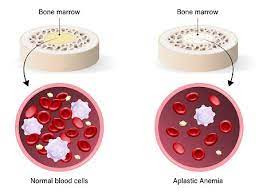Definition
Leukocytes, or white blood cells, represent a minor component of blood, comprising less than 1% of the total blood volume. They are produced in the bone marrow, after which they circulate through the bloodstream and lymphatic system. Leukocytes are vital for the body's defense, playing a crucial role in protecting it from infections caused by viruses, bacteria, parasites, and fungi.
White blood cells are categorized into various types, each serving distinct functions:
-
Lymphocytes
-
Monocytes
-
Neutrophils
-
Basophils
-
Eosinophils
Each type of white blood cell performs specific tasks. Some are responsible for forming antibodies, which are part of the body's immune defense mechanisms. Others combat infectious agents and eliminate harmful germs. Occasionally, white blood cells are also involved in triggering allergic reactions.
Thus, leukocytes play an essential role in maintaining the body’s health and protecting it from disease. For optimal functioning, the number of leukocytes in the body must remain within normal limits. A blood test is performed to measure leukocyte levels, often as part of a routine blood test. This test is commonly conducted when the body shows signs of infection, inflammation, allergies, or various other medical conditions.
Indication
Routine leukocyte tests help doctors assess the levels of white blood cells in patients, assist in diagnosing medical conditions, and detect hidden diseases early. Below are conditions that may require leukocyte testing:
-
Presence of an infection
-
Allergic reactions
-
Inflammatory conditions
-
Autoimmune diseases
-
Immunodeficiency states
-
Patients receiving treatments that suppress immune functions
-
Chronic conditions like kidney disease, where monitoring leukocyte levels is important
-
Routine medical check-ups
Additionally, leukocyte tests are indicated when patients present symptoms such as:
-
Persistent fatigue
-
Unexplained significant weight loss
-
Fever
-
Unexplained bleeding or bruising
-
Symptoms suggestive of malignancy or cancer
Contraindication
There are no specific contraindications or conditions that would prevent an individual from undergoing the leukocyte test.
Preparation Before the Test
There are no specific preparations required before the leukocyte test. However, it is important to inform your doctor about any medications or treatments you are currently undergoing, as certain drugs can influence the results and lead to abnormal leukocyte levels.
1. Leukocyte Levels Appearing Elevated
Medications such as blood thinners, like heparin, or steroid drugs such as dexamethasone, may cause a false elevation in leukocyte count results, making them appear higher than the actual value. Other substances, including epinephrine, albuterol, and lithium, can also impact the outcome of the test. Be sure to provide your doctor with a complete list of all the medications you take regularly.
2. Leukocyte Levels Appearing Low
Some medications may also cause a reduction in leukocyte levels, leading to falsely low test results. These medications include:
-
Antibiotics
-
Chemotherapy drugs
-
Diuretics that increase urine production
-
Anticonvulsants
-
Antiallergic medications
Test Procedure
The leukocyte level test is conducted using a blood sample. A healthcare professional will collect a blood sample from a vein, usually located in the arm area, using a syringe. The blood will then be analyzed to determine the leukocyte count. This test is typically part of a routine blood test or complete blood count (CBC).
Normal and Abnormal Value
The normal range of leukocyte levels varies based on age and gender. The table below outlines the typical range of leukocyte levels in the body.
|
Age |
The range of normal values (blood volume) |
|
Male, adult |
5,000 - 10,000 |
|
Female, adult |
4.500 - 11,000 |
|
Children |
5,000 - 10,000 |
From the table, we can observe that the normal range for leukocytes is generally between 4,500 and 11,000 per microliter of blood. If the test results fall within this range, it suggests that the leukocyte count is normal, and the body is in good health.
Leukocyte levels are considered abnormal if they fall below the lower limit or exceed the upper limit of the normal range. Such variations may indicate the presence of underlying medical conditions that warrant further investigation.
However, it's essential to note that pregnant women may have white blood cell levels that differ from the normal range stated above. Likewise, newborns and children under the age of 2 may have leukocyte counts that slightly differ from these normal values. Additionally, each laboratory may have its own reference ranges based on specific guidelines and equipment used.
Results and Recommendations (Follow-up Tests)
An increase in leukocyte count could be attributed to a range of medical conditions, including:
-
Bacterial infections
-
Inflammation
-
Allergic reactions
-
Use of steroid medications like dexamethasone
-
Medical conditions such as burns or leukemia
-
Heavy smoking
To determine the precise cause of elevated leukocyte levels, your doctor will conduct further tests based on your symptoms and medical history. Additional tests may include assessments for infection, inflammation, or specific diseases, depending on your presentation.
If the leukocyte test shows a low count, indicating that the levels fall below the normal threshold, it may point to conditions such as:
-
Immune system disorders
-
HIV infection
-
Autoimmune diseases, where the immune system attacks healthy cells
-
-
Bone marrow disorders
-
Severe infections
-
Viral infections
-
Enlarged spleen
-
Chemotherapy or radiotherapy treatments
To identify the underlying cause of a low leukocyte count, your doctor may recommend further diagnostic tests, such as HIV tests, PCR tests to detect viral infections, ANA antibody tests, or bone marrow biopsies. Follow-up testing will be tailored to your symptoms and the doctor’s clinical suspicions regarding the disease in question.
Consult the Right Doctor
If your leukocyte count test shows an abnormal result, either high or low, it is crucial to consult with a general practitioner or specialist for further evaluation. Identifying the root cause will allow for accurate diagnosis and appropriate treatment.
Looking for more information about laboratory, radiology, and other examination results? Click here!
- dr Hanifa Rahma
Tigner, A., & Ibrahim, SA. (2022). Histology, White Blood Cells (p. A single page). StatPearls Publishing.
Higuera, V. (2022). What Is a White Blood Cells (RBC) Count?. Healtline. Retrieved 21 May 2022, from https://www.healthline.com/health/wbc-count.
What Is a White Blood Cells (RBC) Count? - MedlinePlus. MedlinePlus.gov. (2021). Retrieved 21 May 2022, from https://medlineplus.gov/lab-tests/white-blood-count-wbc/.
Medical Test WBC Count - UCSFHealth. UCSFHealth.edu. (2019). Retrieved 21 May 2022, from https://www.ucsfhealth.org/medical-tests/wbc-count.
Nelson, DA. (2022). Normal White Blood Cells (WBC) Count. Verywellhealth . Retrieved 21 May 2022, from https://www.verywellhealth.com/white-blood-cell-wbc-count-1942660.
White Blood Cell Count (WBC)- Testing.com. Testing.com. (2022). Retrieved 21 May 2022, from https://www.testing.com/tests/white-blood-cell-count-wbc/.
Janin, S. (2017). Life Span of White Blood Cells. azcentral. Retrieved 21 May 2022, from https://healthyliving.azcentral.com/life-span-of-white-blood-cells-12245573.html.
Leukemia and Lymphoma Society. Understanding Blood Counts. Retrieved 4 June 2022, from https://www.lls.org/treatment/lab-and-imaging-tests/understanding-blood-counts.












